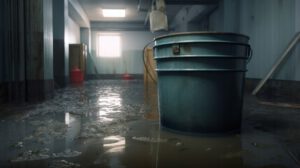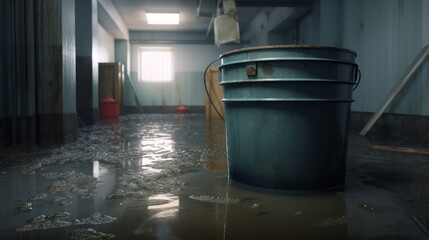Water Damage Los Angeles can be caused by natural disasters, heavy rainfall, or flooding, as well as by plumbing issues and broken appliances. It can be very costly and is rarely covered by homeowner’s insurance policies (a separate flood policy may be needed).
Look for signs of moisture damage such as a musty smell, mold growth, or damp spots on walls and ceilings. Regularly check appliance hoses that lead to your washing machine and refrigerator for leaks.
Water is essential for life, but it can also cause some serious damage. In many cases, water damage is caused by leaks or faulty appliances. If these issues are not addressed promptly, they can lead to costly water mitigation costs and even structural damage. To prevent these problems, you should regularly inspect your property for any potential water-related issues.
Leaking pipes are one of the most common causes of water damage. They can be caused by a variety of things, including freezing temperatures, changes in water pressure, or just age-related wear and tear. The problem is that it’s often difficult to catch a leaking pipe until it is too late. Most plumbing pipes run behind walls or in the ceiling, so unless there’s visible damage to the drywall, it can be hard to know when something is wrong.
Running toilets are another major cause of leaky pipes. Not only does a constantly dripping toilet waste gallons of water, but it can also cause significant damage to surrounding surfaces. It is important to check your toilets regularly to make sure they’re in good working order.
Sewer backups are a messy and dangerous issue that can be caused by a number of factors, including blockages due to tree roots or heavy rainfall. If your sewer line becomes blocked, it can back up into your home or business and damage floors, walls, furniture, and electrical systems. This can also pose health hazards due to the contaminants in wastewater. The best way to prevent this is by having your sewer lines regularly cleaned.
Floods
Flooding occurs when an area is covered by water for a long period of time, soaking soil and destroying anything in its path. Flooding can be caused by storms, a dam or levee break and even tsunamis. Floodwaters can be contaminated with chemicals, sewage and other hazardous materials which pose a health risk to the public. They can also destroy roads, buildings and bridges. Floodwaters can have a devastating impact on communities, destroying homes and businesses and leaving people without basic services like power, gas and water. People can be injured or killed by fast moving floodwaters and should never be walked or driven across flooded areas. The loss of community spirit and economic disruption can be profound for communities affected by flooding.
Flood damage depends on many factors including the amount of water that collects, how long the area is underwater and what material a building, fixtures and fittings are made from. Buildings are not designed to withstand the constant pressure of flood water, which can cause them to collapse or rip away. Flood waters can also be very acidic, which can erode soil around the foundation of buildings and cause serious problems with walls, ceilings, floors and plumbing.
Floods are most commonly caused by heavy rain, ocean waves, rapidly melting snow, dam or levee failure and tsunamis. Human activities such as draining wetlands, building paved surfaces and clearing vegetation that naturally absorbs rainfall contribute to flood risks. Floods can occur in rivers and streams, lakes and natural ponds as well as on farmland. The most common time for river flooding is in early spring when the rapid thaw of winter snow and ice causes rivers to rise and flood surrounding land.
Storms
Storms are the harbingers of all sorts of havoc, bringing with them damaging winds, rain and flooding. From hurricanes to tornadoes, these weather systems can wreak destruction across the land. In addition to devastating property damage, they can also pose health hazards. If a building is exposed to water, it can cause mold, bacteria and other dangerous substances to grow inside the structure. These harmful organisms can create a host of problems, including respiratory problems, skin irritation, fatigue and headaches.
Water damage caused by storms can occur from flooding, tidal surges, rainwater or other precipitation. Flooding can destroy furnishings, furniture and personal belongings, as well as wreak havoc on flooring and walls. If left untreated, water damage can lead to the development of mold, as well as severe and irreversible structural damages. If you suspect that your home has sustained water damage from a recent storm, it is important to hire an experienced restoration company as soon as possible. They can inspect the roof and siding, foundation, basement and any other areas that may have been affected.
When inspecting for storm damage, it is a good idea to look for signs of water damage, such as discoloration or odors. If the home appears damp or has unexplained water stains, it is likely that there is a problem with the plumbing system or appliances. In addition, a sudden increase in the water bill may indicate that there is a leak somewhere. Water damage from a storm can be very serious, and it is important to know the signs so that you can call a professional. This will help to prevent further damage and save you money in the long run.
Appliances
Modern conveniences like your refrigerator, washing machine and water heater are wonderful, but they can also be major sources of unwelcome water damage. Even a small leak can cause major damage, ruin flooring and wood surfaces, and increase the risk of mold and mildew. In many cases, this is due to aging materials and leaky hoses or connections. Inspecting appliances regularly is a good idea, especially in kitchens and laundry rooms.
Leaky appliances may also cause other problems, including:
Corrosion: Water can contain impurities that can corrode metal parts inside of appliances. This can reduce their functionality and eventually lead to a complete failure.
Circuit Boards: Many appliances have intricate circuit boards that can be damaged by water damage. This can create a fire hazard and lead to electrical failure or short circuits.
Mold and Mildew: Mold and mildew love damp environments, so if an appliance is exposed to moisture for a long time it can grow these fungi. These fungi can damage internal components and can even release allergens into the air when they are used.
Water spots: Seeing spots of white or gray on your appliances is often the first sign of water damage. These can occur on surfaces like countertops and flooring, or inside of appliances.
Water damage from appliances can be a huge problem for homeowners and property managers alike. If you are a landlord, it is important to protect your investment by following some simple preventative steps. Investing in appliances that are more resistant to flood damage is a great start. Elevating appliances on stands or platforms is also a good way to protect them. Adding a waterproof barrier around the appliances is another option.
Plumbing
Plumbing is the system that brings fresh water into homes and businesses. However, pipes can wear out or burst and cause water damage. The good news is that most plumbing leaks are preventable. It’s important to watch for cracks, bulges or stains on the ceiling or walls to identify a problem. You can also pay attention to your water bill and look for spikes. In addition, you can install water detectors to alert you to problems before they become a major issue.
Leaks are the most common causes of residential water damage. They can be caused by rust, extreme temperatures or broken pipe joints. In addition, a leaking toilet or overflowing sink can damage your floors and carpets. Fortunately, most of these issues can be prevented by keeping your water tank and drain check valves clean. It’s also a good idea to get your water supply line and pipes inspected every year.
Water seepage can cause health risks, especially for those with weak immune systems. In addition, it can interrupt daily routines and put stress on families. Water damage also requires costly repairs and can lower property value.
Water damage is pervasive in commercial and multi-family residences and can be a major challenge for facility managers. With the right solutions, buildings can minimize the impact of water damage and protect occupants’ safety and well-being. Smart water management helps to reduce costs and maximize building performance. Combined with predictive analytics, they can anticipate maintenance needs, minimizing the need for costly repair and replacement. They can also improve occupant’s wellbeing by optimizing water usage and reducing energy consumption. By taking proactive measures, facilities can avoid costly damages and maintain their reputation.

